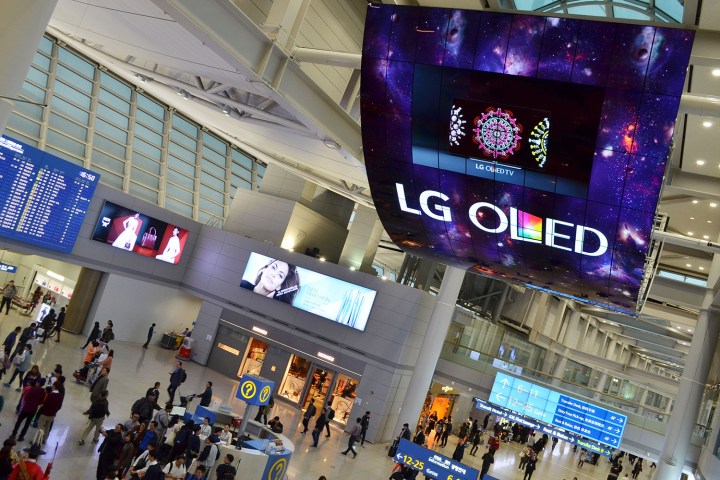
Standing 13 meters high and 8 meters across, LG has created “two of the largest OLED displays in the world.” The displays adorn the interior of South Korea’s Incheon International Airport, standing as strikingly apt odes to the phrase, “look what we can do.”
“These OLED displays perfectly complement the advanced technology that our airport has become known for,” said Park Wan-su, president and CEO of Incheon International Airport. “We are always eager to showcase to the millions of travelers every year the cutting-edge technology that originates from Korea. OLED is a prime example of that.”
The displays were created by LG in partnership with the French design firm Wilmotte & Associates, famous for designing such avant garde structures as the Project Signal Tower Defense.
“While the world’s largest OLED sign is certainly something to be proud of, we are more excited about the opportunity to introduce travelers from across the world to the magic of OLED,” said Ro Se-yong, senior vice president and head of business-to-business solutions at LG Electronics. “The benefits of OLED technology can only be viewed, they cannot be described with mere words.”
Se-yong’s point rings true for anyone who’s attended the annual CES technology conference in Las Vegas, where LG has made a habit of erecting similarly massive walls of OLED displays that, inevitably, plug up the entrance to the showroom floor with hordes of entranced attendees.
As one of the pioneers of OLED panels for use in televisions, LG has been the lone wolf among the primary TV manufacturers in pushing the technology, which is renowned for its brilliant color and inky black levels. In 2015 LG unveiled its first “affordable” OLED display for consumer use in the 55-inch 1080p EC9300, which debuted with a price tag of $3,500, and has steadily made its way to a more manageable price (and a new model number, the EF9100) of $1,800
Since then, the company has continued to delve into OLED, unveiling a host of 4K Ultra HD models, including the EF9500, which recently supplanted its predecessor to become “the most spectacular TV we’ve ever tested.” Of course, to enjoy its wonders, users will have to shell out around $5K for the 65-inch version. But thanks to efforts to advance the technology from LG and others, OLED is now well on its way to becoming cost-effective in the next few years.
Until then, world travelers without an Amex Black card can marvel at monuments like LG’s new Incheon Airport structures as we wait for the tech to land in our living rooms.
Editors' Recommendations
- How LG’s OLED Art movement is inspiring and redefining the digital canvas
- LG’s 2024 OLED evo TVs available for preorder and start at $1,500
- LG’s 2024 OLED M4 takes AI processing to new heights ahead of CES
- LG releases 2023 OLED TV prices: evo G3 starts at $2,500, preorders start March 6
- LG says its G3 OLED evo TV will be 70% brighter, with no visible wall gap




